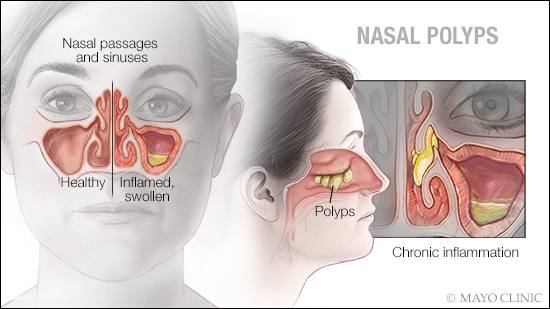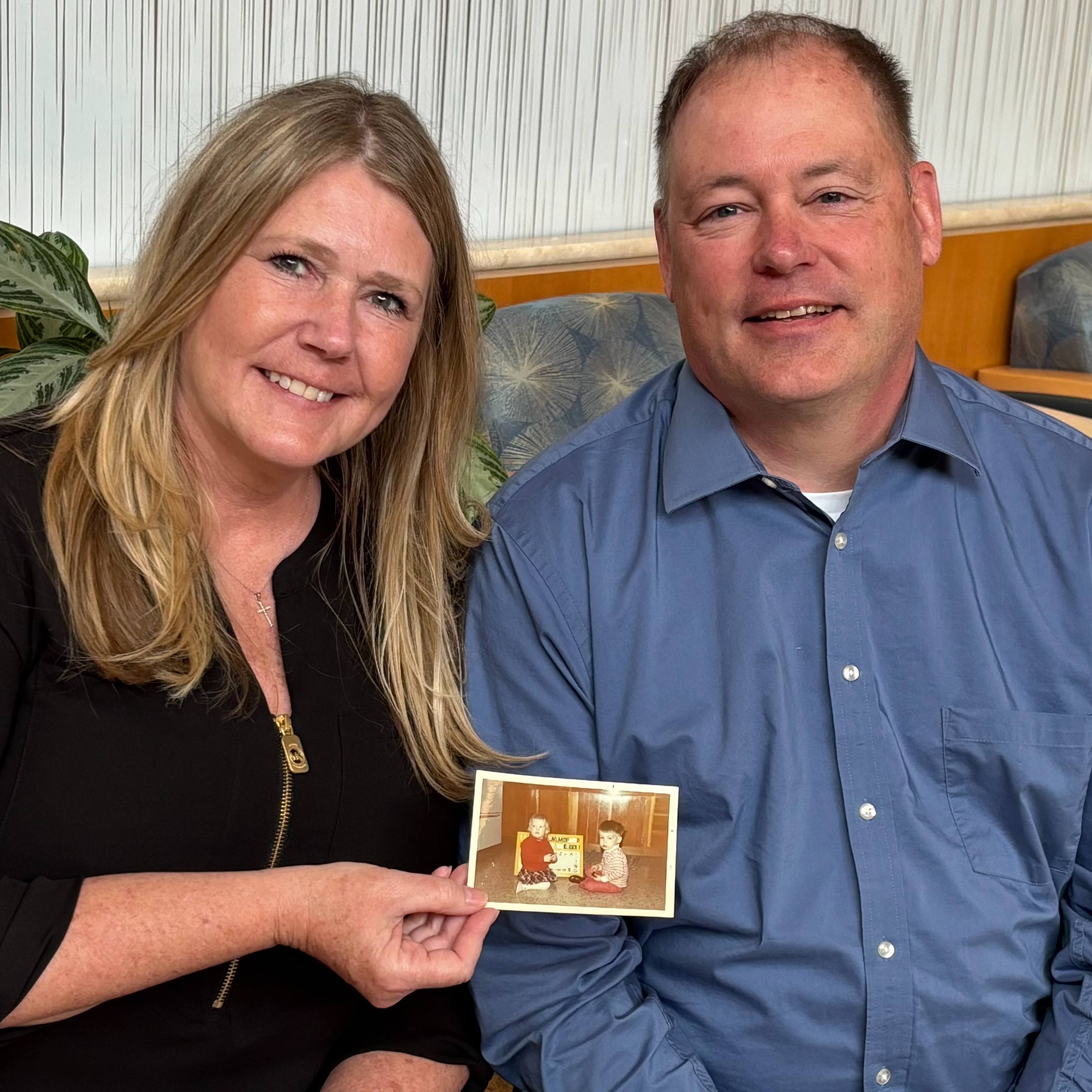-
Mayo Clinic Q and A: Understanding nasal polyps

DEAR MAYO CLINIC: What causes nasal polyps, and do they always require removal? If they are removed, is there a chance they might come back?
ANSWER: Nasal polyps form in the nasal passages and sinuses as a result of chronic inflammation called chronic rhinosinusitis. When they are small, nasal polyps may not cause any symptoms or require treatment. Larger polyps that lead to symptoms usually need treatment, such as medication to shrink them or surgery to remove them. Polyps have a tendency to come back after treatment, so follow-up care often is required.
Nasal polyps are noncancerous growths that tend to appear most often in the area where the sinuses near the eyes, nose and cheekbones drain into the nose. Because nasal polyps are soft and don't cause pain, most people don't know they have them until the polyps grow large enough to block the nasal airway. That triggers symptoms such as a persistent stuffy and runny nose, decreased sense of smell and taste, sinus pressure and thick nasal drainage.
It's not clear what triggers the sinus inflammation that leads to the formation of nasal polyps. People who have allergies or asthma, and those who have airway reactions to aspirin or ibuprofen, tend to be at higher risk for developing nasal polyps. Some research suggests that people who develop polyps have different immune system responses and different chemical markers in their mucous membranes than those who don't develop them.
When polyps cause symptoms, treatment usually starts with medication to shrink them. The first line of treatment typically is a corticosteroid nasal spray to reduce swelling and irritation, along with nasal saline rinses. If that isn't enough, an oral corticosteroid, such as prednisone, may be recommended. Treating an underlying condition, such as asthma or allergies, that may be associated with the chronic inflammation triggering polyp development can help control symptoms, as well.
There's also a new treatment option available for nasal polyps that was approved by the Food and Drug Administration in June. The medication, dupilumab, is given by injection every two weeks. It's been shown to decrease polyp size, and control chronic nasal and sinus inflammation. At this time, however, it is not known how long people with polyps need to be on this medication to control their polyps. Early data shows that polyps and symptoms return once the medication is stopped.
If medications don't shrink polyps to the point that they no longer cause symptoms, then surgery to remove them may be necessary. The type of surgery used to remove nasal polyps is called endoscopic sinus surgery. During this procedure, a surgeon inserts an endoscope — a small tube with a lighted magnifying lens and camera — through the nostrils to see the sinuses. Then the surgeon uses tiny instruments to remove the polyps. During the surgery, the surgeon also will enlarge the openings leading from the sinuses to the nasal passages to help sinus rinses and medications reach the sinus cavities. Most patients with chronic rhinosinusitis and nasal polyps need to keep using nasal medications and rinses after surgery.
After nasal polyps are removed, they have a tendency to come back. Polyps return in months or years for about half of patients. Once people are aware that they are predisposed to developing nasal polyps, they can be monitored regularly, and polyps often can be detected when they still are small. That allows medications to be adjusted as needed to control the polyps more effectively and potentially decrease symptoms.
Surgery may be necessary for up to half of patients with nasal polyps. Unfortunately at this time, there is no cure for chronic rhinosinusitis with nasal polyps. But with endoscopic sinus surgery and new advances in medication, symptoms can be controlled better. — Dr. Erin O'Brien, Otorhinolaryngology — Head and Neck Surgery, Mayo Clinic, Rochester, Minnesota







